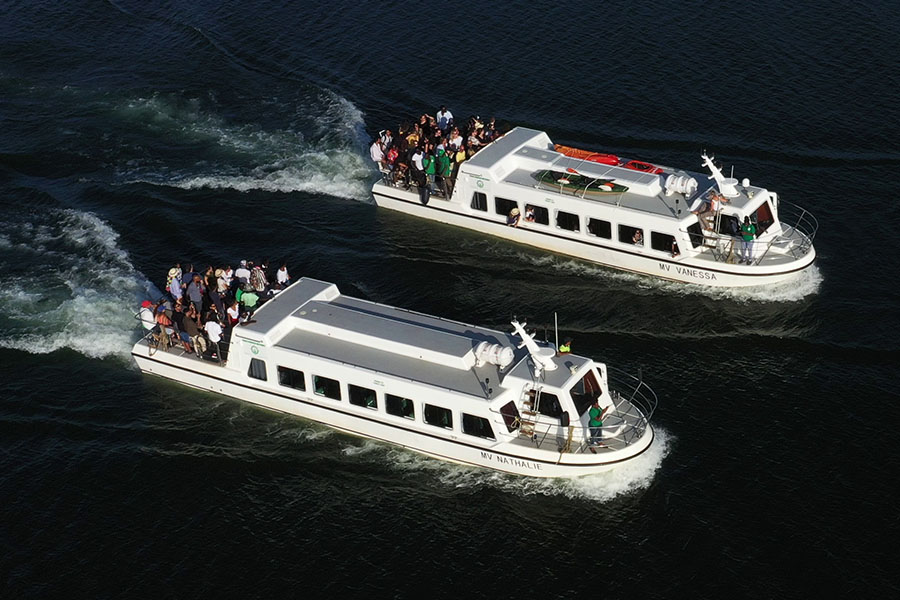Nyanza Evergreen Waterways, the cruising company that operates MV Vanessa and MV Nathalie on Lake Victoria has launched a new route from Kampala to Jinja in a bid to open up a scenic and experiential water route to one of Uganda’s busiest travel destinations.
Initially, Nyanza only operated the Entebbe – Kalangala route on top of other private cruises.
Vanessa will be doing the new Jinja route but this can always be reinforced by Nathalie, depending on the demand.
The boat will be moving from Ggaba to Jinja every once a week – going Friday and returning Sunday.
The cruise costs Ushs 125,000 for one route. A return ticket costs Ushs 225,000. This offer runs until end of July. It will take cruisers 2 hours to sail from Ggaba to Jinja.
“We are doing this for the people who would love to travel by water without experiencing traffic, getting the fresh air and seeing the different islands,” Donna Ayebare, the Marketing and Communications Officer at Nyanza Evergreen Waterways told Plugged in an exclusive interview.
Jinja has quickly become Uganda’s busiest tourism hub with a lot of travel related activities giving tourists a packed itinerary.
Being the Source of River Nile has positioned it as an ideal destination for water related activities like water rafting, kayaking, tubing, cruises, jet boat rides along with other activities like bunjee jumping, quad biking, horseback riding, sight seeing, mountain biking as well as a buzzing nightlife.
This activity has also created a variety of destinations for hospitality.
“Jinja is a hub for activities, that’s where the Source of the Nile is. This will promote domestic tourism. This has been the case with the Entebbe route with the highest number of our clients being Ugandans,” Ayebare adds.
Marine tourism still remains an underdog among the list of travel products.
Ayebare attributes this mainly to the phobia surrounding water transport among Ugandans.
“The biggest challenge for marine tourism is that Ugandans and Africans are so terrified by water. There are people who come to our boats but they would not have come had it not been for a friend’s birthday or if someone didn’t insist that they attend the event,” Ayebare says.

But she says Nyanza is doing its best to give travelers confidence by observing the highest safety protocols.
“We sell safety first. We have life jackets (more than 60), life rings, an inflatable life raft, a GPS system, solar, a satellite radio for communication, emergency door, navigation lights and everything”.
She also points out the issue of investment, in the sense that investors are yet to consider marine tourism among the preferred businesses. They still opt for the traditional sectors like real estate never mind that Uganda’s tourism has a lot of growth potential.
Another significant barrier to positioning marine tourism as a popular tourism product in Uganda, is marketing. While the private sector has made some inroads by investing in boats like MV Vanessa and MV Kazinga (in Queen Elizabeth), government through the Ministry of Tourism and Uganda Tourism Board (UTB) are yet to give this product the push it requires considering it (government) has a bigger marketing budget.
Cost
Going to Jinja by water comes at a rather high cost compared to the normal bus fare. And according to Ayebare, this cost is influenced by both distance and the fuel.
“This does not even take under consideration how high the fuel prices have gone. Say you are charging 225,000 for a return, out of that, 88 percent of this is going to cover overhead costs,” says Ayebare.
“We also never thought Diesel prices would also go so high, at some point even higher than petrol”.
She adds that these boats navigate in such a way that they guzzle so much fuel. This is even worse when the waters are bumpy.









